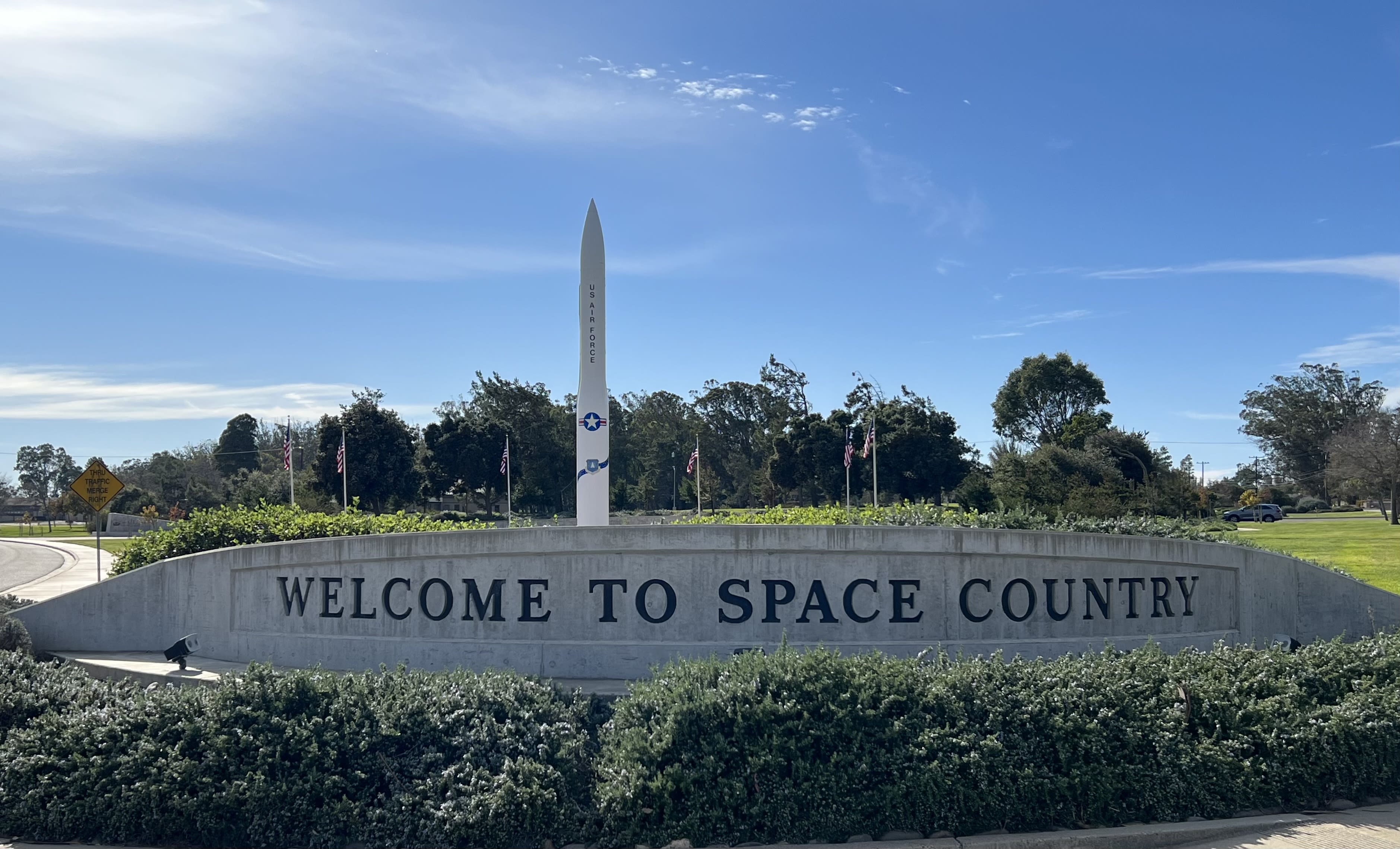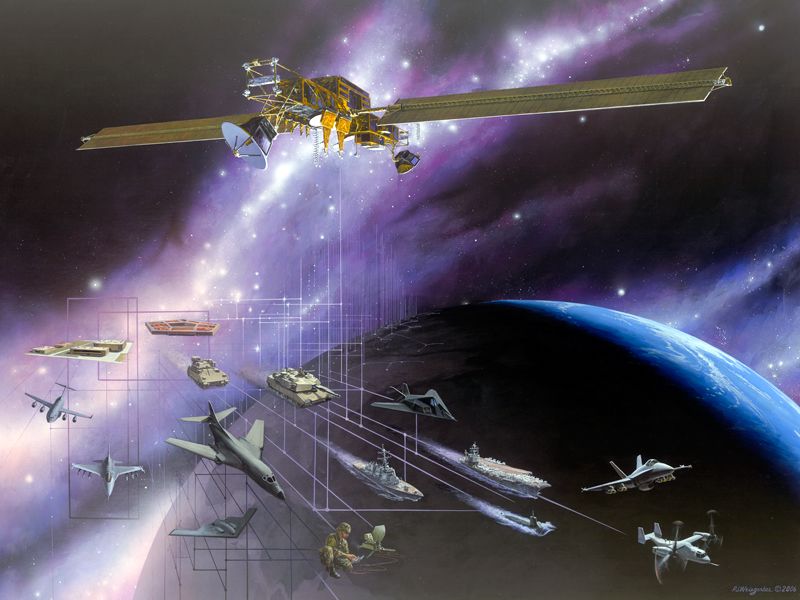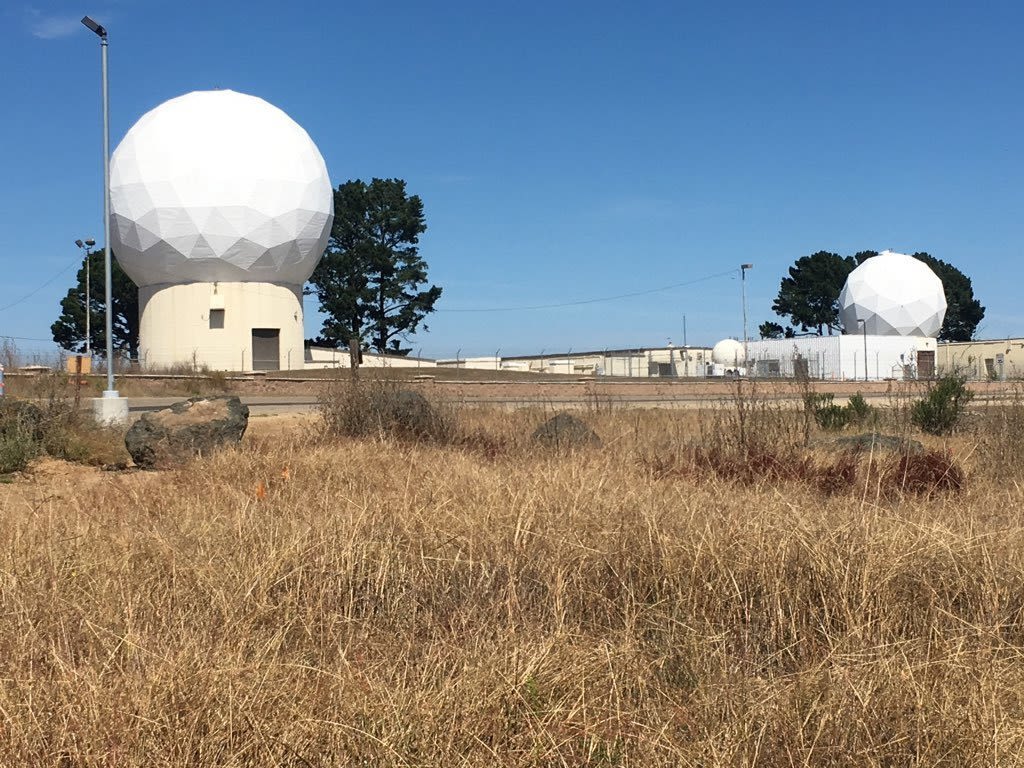Reach for the stars
195th Wing squadrons support U.S. Space Force

Story by Senior Airman Melanie L. Nolen
195th Wing Public Affairs
Video by 2nd Lt. Darren Domingo
50th Space Wing Public Affairs
June 2, 2022
VANDENBERG SPACE FORCE BASE, Calif. – “Welcome to Space Country” greets base visitors arriving through Vandenberg’s main gate. Located on the central coast of California, Vandenberg Space Force Base is home to a variety of space operations, both military and civilian, and is known for lighting up the night sky when hosting a launch.
Two California Air National Guard units also call Space Country “home” while performing duties that directly support the nation’s space mission and defense. The 148th Space Operations Squadron and the 216th Space Control Squadron are both part of the 195th Wing - an Air Guard wing with a unique blend of missions encompassing space, cyberspace, intelligence and combat communications.
The 148th SOPS performs 24/7 command and control of the Milstar and Advanced Extremely High Frequency satellite constellation, a mission system that provides the most protected communications networks for the highest levels of the Defense Department, including the President of the United States and combatant commanders around the globe.
“We [the 148th] make sure that all of the equipment with the Milstar is running properly,” said Staff Sgt. Matthew Herrera, a 148th SOPS radio frequency technician. “For any type of radio frequency that goes up to the satellites, we make sure that the signal is secure and that all of the equipment on the ground is functioning properly at the unit.”
They are an essential part of the mission because if the equipment is not working properly, the space operators are not able to do their job and the people downrange won’t have secure communications, said Herrera.
“The 216th SPCS is one of five Space Electromagnetic Warfare (Space EW) units that rapidly deploy nearly anywhere in the world to deliver flexible space capabilities in a tactical environment to support global and theater campaigns,” said 2nd Lt. Soren Dietrichson, a space operations officer with 216th SPCS.
“For the 216th and the space control squadrons in general, our mission is offensive and defensive space control in space. Basically, we make sure that our warfighters and geographic combatant commanders have access to communications in space and to deny our adversaries the same [access].”

“For any type of radio frequency that goes up to the satellites, we make sure that the signal is secure and that all of the equipment on the ground is functioning properly at the unit.”

Airmen of the 148th Space Operations Squadron at Vandenberg Air Force Base work around the clock providing access to secure communications for tactical warfighters, combatant commanders and the national command authority Aug. 5, 2019 at Vandenberg Air Force Base, California. The 148 SOPS is the first and only California Air National Guard Unit with a satellite command and control mission. (U.S. Air Force photo by Staff Sgt. Richard D. Lewis)
Airmen of the 148th Space Operations Squadron at Vandenberg Air Force Base work around the clock providing access to secure communications for tactical warfighters, combatant commanders and the national command authority Aug. 5, 2019 at Vandenberg Air Force Base, California. The 148 SOPS is the first and only California Air National Guard Unit with a satellite command and control mission. (U.S. Air Force photo by Staff Sgt. Richard D. Lewis)
“For the 216th and the space control squadrons in general, our mission is offensive and defensive space control in space.”

A Milstar satellite in space above an image of earth with a grid of inter-connecting lines representing the communications with Air Force, Army, Navy and Marine users.
A Milstar satellite in space above an image of earth with a grid of inter-connecting lines representing the communications with Air Force, Army, Navy and Marine users.

Exterior view of the Vandenberg Tracking Station complex taken Aug. 4, 2019 at Vandenberg Air Force Base, California. The 148th Space Operations Squadron provides the Department of Defense with space situational awareness, command diagnostics, telemetry data, over the air re-key and satellite access for tactical users in the field as well as strategic users. (U.S. Air Force photo by Staff Sgt. Richard D. Lewis)
Exterior view of the Vandenberg Tracking Station complex taken Aug. 4, 2019 at Vandenberg Air Force Base, California. The 148th Space Operations Squadron provides the Department of Defense with space situational awareness, command diagnostics, telemetry data, over the air re-key and satellite access for tactical users in the field as well as strategic users. (U.S. Air Force photo by Staff Sgt. Richard D. Lewis)
“With the technology that our adversaries are building, it’s important for us to have a separate branch to make sure that funds are allocated directly toward [the] space [mission].”

The Defense Contract Management Agency’s Lockheed Martin Sunnyvale contract management office marks the completion of more than 20 years supporting the advanced extreme high frequency satellite program. AEHF-6, the final satellite of the AEHF program, will begin its expected 14-year service life this November. AEHF is preceded by Milstar, formerly known as the Military Strategic and Tactical Relay, the last of which entered into operational service over 17 years ago. The joint AEHF and Milstar constellation provides secure, global, and jam-resistant communications for military ground, sea, and air assets.
The Defense Contract Management Agency’s Lockheed Martin Sunnyvale contract management office marks the completion of more than 20 years supporting the advanced extreme high frequency satellite program. AEHF-6, the final satellite of the AEHF program, will begin its expected 14-year service life this November. AEHF is preceded by Milstar, formerly known as the Military Strategic and Tactical Relay, the last of which entered into operational service over 17 years ago. The joint AEHF and Milstar constellation provides secure, global, and jam-resistant communications for military ground, sea, and air assets.
On an ever-increasing basis, space is becoming more and more contested, said Dietrichson.
The U.S. Space Force was established Dec. 20, 2019, when the National Defense Authorization Act was signed into law, creating the first new branch of the armed services in 73 years to respond to a need for a military service focused solely on pursuing superiority in the space domain.
“With the technology that our adversaries are building, it’s important for us to have a separate branch to make sure that funds are allocated directly toward [the] space [mission],” said Herrera. “We see their technology is getting more advanced and that our assets in space need more protection. To have a space force is important to maintain our dominance in space in the future.”
Without the Guard’s presence, there would be a critical vacuum that would exist in the support needed for the warfighters in this domain, said Dietrichson.
“The preponderance of the total trained force for our specialty (roughly 60%) falls within the Air National Guard,” said Dietrichson. “Throughout our ranks are people that bring invaluable, relevant expertise to the table from their work for civilian employers and from their higher education. They all provide unique experiences and perspectives that enable our unit to operate at an exceptionally high standard.”
The 148th and 216th still operate as part of the Air National Guard, supporting both state activations and federal missions, and continue to be ready for activation at a moment’s notice.
“The Guard brings value to the space mission with continuity, expertise, and reliability,” said Dietrichson. “Knowing that you have people who have been there for many years in a way that you could not have anywhere else within this mission set, makes the Guard a vital component of what we do in space in general.”
The 4th Space Operations Squadron ensures secure military satellite communications, vital to our nation's military defense. 4 SOPS operates the Milstar and Advanced Extremely High Frequency satellite constellations, providing the nation's warfighters global, secure, survivable, strategic and tactical communications throughout the full spectrum of conflict. They execute the unique mission of communications management, satellite command and control and ground segment maintenance for the Milstar/AEHF constellation.
The 4th Space Operations Squadron ensures secure military satellite communications, vital to our nation's military defense. 4 SOPS operates the Milstar and Advanced Extremely High Frequency satellite constellations, providing the nation's warfighters global, secure, survivable, strategic and tactical communications throughout the full spectrum of conflict. They execute the unique mission of communications management, satellite command and control and ground segment maintenance for the Milstar/AEHF constellation.


